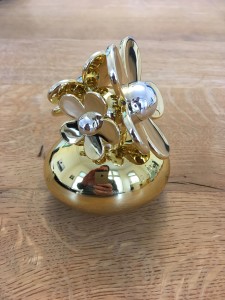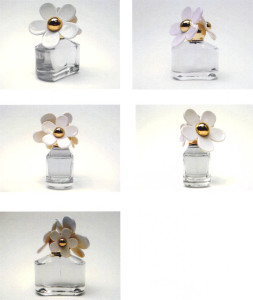3-D Mark litigation is like life itself – you never know what you’re going to get. And for that reason, it’s all the more enjoyable when a 3-D registration prevails over a knock-off.
A notorious trader of perfume imitations was marketing the following perfume bottle –
apparently feeling safe about the plaintiff’s product shape, registered for “perfume” and found by the EUIPO to be inherently distinctive –
The Regional Court of Frankfurt shares the uneasiness of many other courts when it comes to 3-D registrations, and did what courts do when feeling uneasy – turned down the plaintiff’s action. The defendant’s bottle, the judges found, was not perceived as an indication of origin by the public, so marketing the bottle could not infringe the plaintiff’s trademark.
On appeal, the High Court fearlessly applied established principles to the case and judged in favour of the plaintiff (OLG Frankfurt, Judgement of 17 November 2016, 6 U 220/15):
The High Court’s premise is that, in the eyes of the public, goods are given certain shapes for aesthetic or functional purposes rather than to serve as an indication of origin. So just because a shape is registered as a trademark does not necessarily mean that marketing a similar shape would constitute infringing use. The following aspects make a strong case for infringing use: First, the more unusual a registered shape is, compared to the products in the respective market, the more likely it is that marketing a similar shape would be perceived as trademark use. One may add that, regarding any form of trademark, there is a direct relation between the degree of distinctiveness of a mark and the public’s inclination to perceive similar or identical signs as trademarks. Second, the public is likely to assume trademark use, if product shapes are typically used and perceived as an indication of origin in the respective market. Regarding these two aspects, the High Court finds that the design of perfume bottles is widely used as an indication of origin in the world of smells and is regarded as such by the public. Perfume bottles are the key visual of most perfume ad campaigns. The High Court also finds that the blossom-shaped lid is striking and highly unusual. The fact that the lid is hard to handle because of its size, underlines its purpose to serve as a distinguishing feature.
The affirmation of infringing use provides for a certain tailwind for the further infringement test: The shape mark is of average distinctiveness because of the unusual shape of the lid. As the blossom lid is the dominating element of both shapes, the differences in the bottles (square vs. egg-shaped) do not make the overall shapes dissimilar. Since the goods are identical, the High Court has found for risk of confusion.
For further reading see the Bounty decision by the Federal Supreme Court of 2015: If a shape has been registered for acquired distinctiveness it can be assumed that marketing a highly similar shape would constitute trademark use.
_____________________________
To make sure you do not miss out on regular updates from the Kluwer Trademark Blog, please subscribe here.
Kluwer IP Law
The 2022 Future Ready Lawyer survey showed that 79% of lawyers think that the importance of legal technology will increase for next year. With Kluwer IP Law you can navigate the increasingly global practice of IP law with specialized, local and cross-border information and tools from every preferred location. Are you, as an IP professional, ready for the future?
Learn how Kluwer IP Law can support you.




